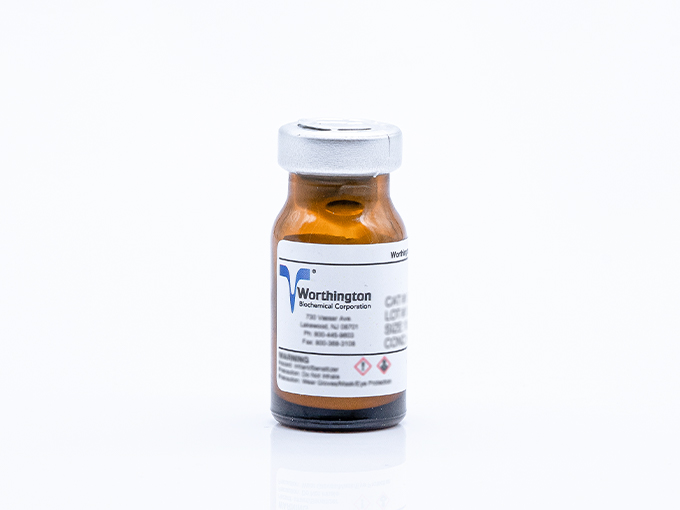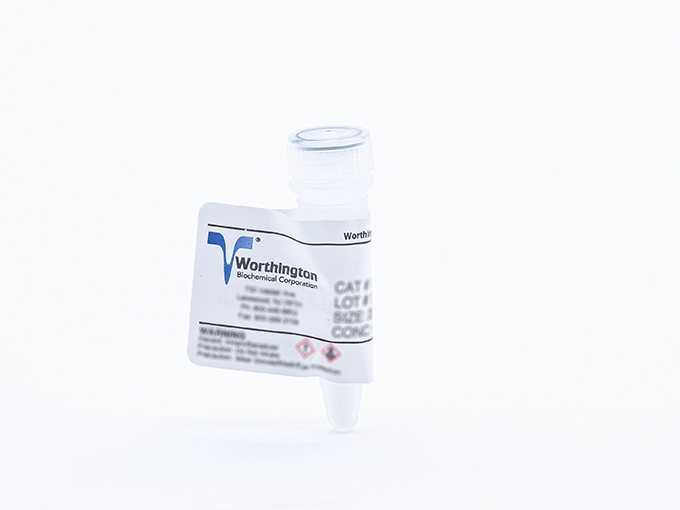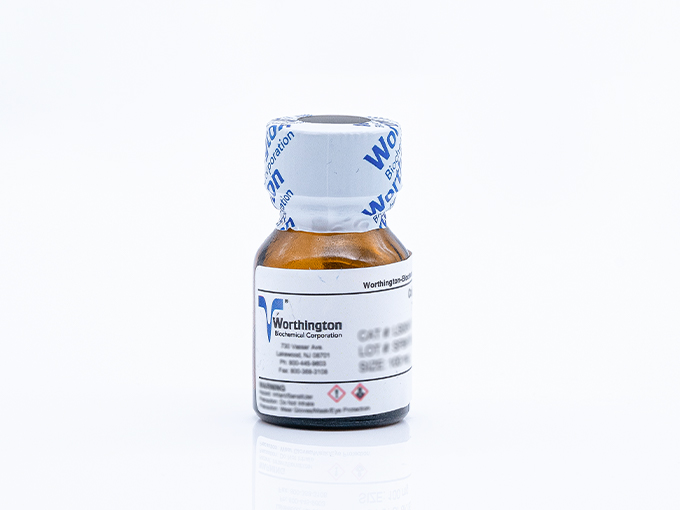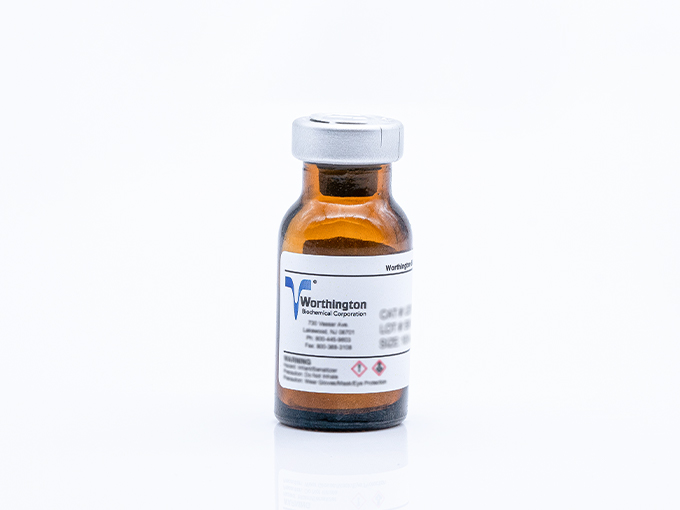Enzymes
Exploring Enzyme Catalysts and Their Diverse Applications
Enzymes are catalysts for numerous biochemical reactions. With our comprehensive array of enzymes spanning Hydrolases, Lyases, Oxidoreductases, and Transferases, we provide solutions for diverse biological and biochemical applications.
There are several groups of enzymes, each with specific functions and characteristics:
Oxidoreductases
Oxidoreductases is one of the six major classes of enzymes, governing oxidation-reduction reactions pivotal for energy production, metabolism, and detoxification. They are comprising subclasses such as Dehydrogenases, Hydroperoxidases, and Oxidases, each contributing distinct catalytic capabilities.
- Dehydrogenases catalyse the removal of hydrogen atoms from their substrates. They are involved in oxidation-reduction reactions and play key roles in energy metabolism. Examples include lactate dehydrogenase (LDH), which is important in cellular respiration and fermentation processes.
- Peroxidases catalyse the oxidation of various substrates and therefore play a critical role in cellular defence against oxidative stress.
- Oxidases catalyse oxidation reactions and therefore play crucial roles in biological processes, such as cellular respiration, metabolism, and the synthesis of vital molecules.
Hydrolases
Hydrolases represent a class central to hydrolytic cleavage reactions. Within this category, we cover a broad range, such as Glycosylases, Proteases, Phosphatases, Esterases, and Lipases. Within the group of Hydrolases, many enzymes are relevant for applications in the field of Molecular Biology, such as DNases, RNases, etc.
- Proteinases catalyse the cleavage (hydrolysis) of peptide bonds in proteins, leading to their breakdown into smaller peptides or amino acids. The enzyme class of Proteinases is often subdivided into Proteases and Peptidases. Proteases exhibit both endopeptidase (cutting within a peptide chain) and exopeptidase (cutting at the ends of a peptide chain) activity, while Peptidases primarily show exopeptidase activity. These enzymes play pivotal roles in cellular processes such as protein digestion, recycling, and cell cycle regulation. Their ability to break down proteins makes them indispensable tools for Proteomics studies, such as protein and peptide sequencing. Many proteases play pivotal roles in Tissue Dissociation for cell isolation, such as Collagenases, Trypsin and Papain.
- Esterases catalyse the hydrolysis of ester bonds in various organic compounds, including lipids, carbohydrates, and synthetic substrates. They play roles in lipid metabolism, signal transduction, and detoxification processes.
- Phosphatases catalyse the removal of phosphate groups from molecules, such as proteins, nucleotides, and sugars. They are involved in signal transduction, cell cycle regulation, and cellular metabolism.
- Glycosidases (also called glycoside hydrolases) catalyse the cleavage of glycosidic bonds, making them crucial for the repair of damaged DNA and the regulation of various cellular processes. Notably, we not only offer Lysozyme, a Glycosidase, but also the corresponding Lysozyme Substrate (Micrococcus lysodeikticus cells).
- Lipases are enzymes that catalyse the hydrolysis of lipids, breaking down triglycerides into fatty acids and glycerol. Their actions are essential for lipid digestion and metabolism in living organisms. Their ability to break down fats and oils makes them valuable tools for improving the efficiency of industrial processes and developing novel biotechnological applications.
Lyases
Lyases are enzymes that catalyse the cleavage of chemical bonds without the addition of water, facilitating reactions crucial for various metabolic pathways and synthetic processes.
Transferases
Transferases are enzymes that facilitate the transfer of functional groups, such as methyl, phosphate, or glycosyl groups, between molecules. Their diverse roles encompass crucial processes in metabolism, signal transduction, and the synthesis of biomolecules. From the modification of nucleic acids to the regulation of cellular metabolism, transferases play pivotal roles in cellular function and have significant applications in biotechnology, medicine, and the production of various biochemicals.
-
Protease S.aureus - STAP
Cat.-Nr: LS003605
Protease S. aureus V8 (Endoproteinase-Glu-C) specifically cleaves peptide bonds on the COOH-terminal side of either aspartic or glutamic acids. In... Read More
-
Protease S.aureus - STAP
Cat.-Nr: LS003608
Chromatographically purified according to Drapeau, G., Boily, Y., and Houmard, J.: JBC, 247, 6720 (1972). A lyophilized powder.
-
Protease, Sequencing Grade, S. aureus - STSEQ
Cat.-Nr: LS02126
Chromatographically purified according to Drapeau, G, et.al, JBC, 247, 6720 (1972). Supplied in vials containing 10µg or 50µg lyophilized... Read More
-
Protease, Sequencing Grade, S. aureus - STSEQ
Cat.-Nr: LS02128
Chromatographically purified according to Drapeau, G, et.al, JBC, 247, 6720 (1972). Supplied in vials containing 10 µg or 50 µg lyophilized powder... Read More
-
Superoxide Dismutase - SODBE
Cat.-Nr: LS003540
Chromatographically purified essentially as described by McCord and Fridovich, JBC, 244, 6049 (1969). A dialyzed, lyophilized powder.
-
Superoxide Dismutase - SODBE
Cat.-Nr: LS003541
Chromatographically purified essentially as described by McCord and Fridovich, JBC, 244, 6049 (1969). A dialyzed, lyophilized powder.
-
Trypsin TPCK treated - TRTPCK
Cat.-Nr: LS003740
A chromatographically purified, diafiltered, lyophilized powder that has been treated with L-(tosylamido-2-phenyl) ethyl chloromethyl ketone (TPCK)... Read More
-
Trypsin TPCK treated - TRTPCK
Cat.-Nr: LS003741
TRTPCK has been treated with L-(tosylamido-2-phenyl) ethyl chloromethyl ketone (TPCK) to inhibit contaminating chymotryptic activity [Kostka, V., and... Read More
-
Trypsin TPCK treated - TRTPCK
Cat.-Nr: LS003744
A chromatographically purified, diafiltered, lyophilized powder that has been treated with L-(tosylamido-2-phenyl) ethyl chloromethyl ketone (TPCK)... Read More
-
Trypsin, Sequencing Grade II, purified - TRSEQII
Cat.-Nr: LS02117
Bovine trypsin that has been treated with L-(tosylamido-2-phenyl) ethyl chloromethyl ketone (TPCK) to inhibit contaminating chymotryptic activity and... Read More
-
Trypsin, Sequencing Grade, modified - TRSEQZ
Cat.-Nr: LS02122
Trypsin, treated with L-(tosylamido-2-phenyl) ethyl chloromethyl ketone to inhibit contaminating chymotryptic activity, chemically modified to... Read More
-
Trypsin, Sequencing Grade, modified - TRSEQZ
Cat.-Nr: LS02123
Trypsin, treated with L-(tosylamido-2-phenyl) ethyl chloromethyl ketone to inhibit contaminating chymotryptic activity, chemically modified to... Read More
-
Trypsin, TPCK, Irradiated - TRTVMF
Cat.-Nr: LS003750
For applications requiring virus free trypsin, Worthington offers VMF (Virus and Mycoplasma Free) Trypsin which is a specially processed trypsin. The... Read More
-
Trypsin, TPCK, Irradiated - TRTVMF
Cat.-Nr: LS003752
Chromatographically purified trypsin treated with L-(tosylamido-2-phenyl) ethyl chloromethyl ketone (TPCK) to inhibit contaminating chymotryptic... Read More
-
Tyrosine Decarboxylase, Apoenzyme - TYDAPO
Cat.-Nr: LS004968
APOenzyme. Dried cells grown in B6 deficient media.
-
Tyrosine Decarboxylase, Apoenzyme - TYDAPO
Cat.-Nr: LS004970
APOenzyme. Dried cells grown in B6 deficient media.
-
Urease
Cat.-Nr: LS003887
Fractionated from crude jack bean meal extract. Tested for ammonia. A soluble, lyophilized preparation.
-
Urease - URC
Cat.-Nr: LS003885
Fractionated from crude jack bean meal extract. Tested for ammonia. A soluble, lyophilized preparation.
-
Uricase C.utilis - URYW
Cat.-Nr: LS003886
Fractionated from crude jack bean meal extract. Tested for ammonia. A soluble, lyophilized preparation.




